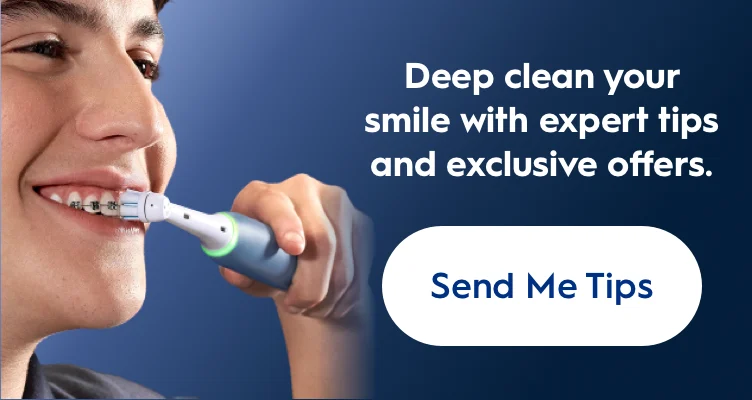
Adjustments
Regular monthly follow-up visits for braces patients. Elastic bands are replaced and archwires may be replaced or adjusted as needed.
Anterior
Toward the front of the mouth, specifically incisor and canine teeth.
Appliance
Any device, either attached to the teeth or removable, designed to move the teeth, change the position of the jaw, or hold the teeth in their final positions after braces are removed. This includes retainers, headgears, and so on.
Archwire
A wire that is held in place by the brackets and acts as a track to guide the movement of teeth.
Bands
Also known as elastic ties or ligatures, these are tiny rubber rings that hold the archwire into place. They come in a variety of colors.
Bite
Formally known as an “occlusion,” this is the way that the upper and lower teeth meet together.
Bite plate
An acrylic appliance that reduces an overbite by preventing the back teeth from touching.
Bonded retainer
This is a permanent retainer that consists of a wire glued across the inside surface of the upper or lower front teeth. It’s designed to keep teeth in their current position.
Bonding
The process of attaching brackets or other permanent appliances to teeth using specialized non-toxic glue.
Bracket
A small square that is bonded directly to teeth with a dental bonding agent or attached with orthodontic bands. Brackets act like handles, holding the archwires that move the teeth in place. They can be metal or clear, and can be placed on the outside or inside of teeth.
Buccal tube
Sometimes simply called “hooks,” these are small metal hooks bonded to the outside of a bracket or tooth. They are used to hold elastics or other auxiliary pieces.
C Chain
Also known as a power chain, this is a continuous elastic chain that wraps around multiple brackets to close space between teeth.
Crossbite
Also known as an underbite, this bite occurs when any teeth of the upper jaw are located on the inside of the lower jaw.
Decalcification
Sometimes called “white scars,” these are the white chalky marks on teeth caused by plaque being left on for an extended period of time.
Deep bite
Commonly known as an over bite, this occurs when the top front teeth overlap the bottom front teeth excessively.
Diastema
A space between two teeth.
Elastic tie
Also known as a “band,” this is a tiny rubber ring that holds the archwire in place. They come in a variety of colors.
Elastics
Also known simply as rubber bands, these are attached to hooks on brackets and connect the upper and lower jaw diagonally. They need to be replaced by the patient 3-4 times a day to maintain their elasticity. Unless otherwise prescribed, rubber bands should be worn at all times except for when brushing, flossing, or eating a large meal.
Functional appliances
These are appliances that use the muscle action of speaking, eating and swallowing to produce force to move the teeth, align the jaws, and stimulate the growth of either the upper or lower jaw. They’re also known as orthopedic appliances and include devices such as orthopedic correctors, activators, bionators, Frankel appliances, Herbst appliances and twin blocks.
Hawley retainer
The most common and recognizable type of retainer. It is made of an acrylic plate connected to a metal wire that wraps around the front of teeth.
Headgear
An appliance worn outside of the mouth to provide traction for growth modification and tooth movement. The headgear attaches to the head using a chin strap, neck strap, or head strap. It then attaches to the teeth using 2 rubber bands that connect the headgear to hooks on the teeth.
Herbst appliance
A fixed appliance that is used to treat a growing patient with an underdeveloped lower jaw. It holds the lower jaw in a forward position to reduce over bite and enhance the patient’s profile.
Holding arch
These types of appliances include lingual arches, nances, and transpalatal arches, and are usually used to maintain the position of the molars. They consist of metal bands that wrap around the molars, connected by metal wires or bands that cross the roof of the mouth.
Impacted tooth
A tooth that is unable to erupt from the gum normally because of the position of the bone or surrounding teeth
Invisalign
System of clear plastic aligners that straighten teeth using a series of 18 to 30 trays. These aligners are removable and do not involve the brackets and wires of traditional braces. Invisalign is available for adults and teens, but not younger children.
Ligature tie
Also called a steel tie or metal tie, this is a fine wire that holds the archwire in place.
Lip bumper
A plastic-coated wire that attaches to the front of the brackets on the lower teeth to create space between the teeth and the lip.
Malocclusion
To put it simply, a “bad bite”; teeth that do not fit together properly.
Mandible
The lower jaw.
Maxilla
The upper jaw.
Metal bands
Also known as orthodontic bands, these are stainless steel rings that are cemented to teeth. They wrap around each tooth to provide an anchor for the bracket.
Mixed dentition
The stage when kids have a mixture of permanent and baby teeth.
Mouth sores
Sores inside the mouth caused by irritation from rough brackets, wires, and other devices. These are common when patients are first getting used to braces.
Occlusion
Also known as a “bite,” this is the way that the upper and lower teeth meet together.
Open bite
In this type of bite, there are areas where the top and bottom teeth do not touch at all.
Orthognathic surgery
This is surgery performed to align the jaws. It is only recommended in extreme cases.
Overbite
This occurs when the top front teeth overlap the bottom front teeth excessively.
Overjet
The distance between the surfaces of the top and bottom teeth in an over bite.
Orthodontics
Derived from the words ”ortho,” "meaning,” "straight,” and “odont,” meaning “tooth,” this is a branch of dentistry that specializes in the diagnosis, prevention, and treatment of facial irregularities. The practice involves the design, application, and control of corrective appliances to bring teeth, lips, and jaws into proper alignment and achieve facial balance.
Orthodontist
A dental specialist with post-doctoral training in orthodontics at an accredited program after dental school. All orthodontists are dentists, but not all dentists are orthodontists.
Orthodontic wax
Non-toxic wax that is made to be placed over brackets or wires to relieve irritation. You can find it at drugstores or get it from any orthodontist.
Palate
The roof of the mouth.
Palate expander
An expandable appliance used to make the upper jaw wider. It can be bonded to teeth or attached with metal orthodontic bands.
Pendex/pendulum
Two very similar appliances, each attached to teeth with 4 orthodontic bands. They are designed to move the upper molars towards the back of the mouth. The advantage of either of these is that it replaces the need for a headgear.
Periodontium
This refers to the tissues surrounding the teeth (the gums).
Phase I
Early orthodontic treatment, usually between ages 7-10, that occurs when a child still has a mixture of permanent and baby teeth. This initial phase is designed to help treat certain orthodontic problems, such as alignment and growth issues, that are more easily corrected when the patient is still young. Phase I patients will almost always still need a full set of braces (known as Phase II) at a later time.
Phase II
Also known as “active treatment” or “full braces,” this phase of treatment occurs once all the permanent teeth have come in.
Posterior
Toward the back of the mouth, specifically molar and premolar teeth.
Power chain
Also known as a C chain, this is a continuous elastic chain that wraps around multiple brackets to close space between teeth.
Quad helix
An appliance that uses looped wire to expand the upper jaw. It is used to correct an underbite.
Retainer
A removable appliance worn to stabilize teeth in their new positions after orthodontic treatment. They are usually made of a combination of plastic and wire. You can also get permanent retainers, which generally consist of wires bonded behind either the bottom or top teeth.
Sagittal appliance
This is a mostly acrylic device that uses 3 screws to expand the arch of a jaw.
Self-ligating brackets
These are brackets that do not need elastics to hold the archwire in place and instead use a metal clip that opens and closes. They are typically smaller than traditional brackets, but do not offer clear or tooth-colored options. Self-ligating brackets create less friction than traditional brackets, which often makes treatment faster and more efficient.
Separator
Also known as spacers, these are elastic rings or metal springs that fit between teeth to create a small space prior to the placement of orthodontic bands. If these are needed, they are put in 2 or 3 days before braces are installed.
Space maintainer
A small metal appliance made of a band that wraps around a tooth and an open loop. It’s used to maintain the space between teeth so a permanent tooth has room to come. in.
Springs
Metal springs placed on the archwire between brackets to push, pull, or open or close the spaces between teeth.
Splint
A clear plastic aligner used for the treatment of TMD (temporomandibular disorder) and facial pain. It can be worn on either the upper or lower teeth.
TMJ
The temporomandibular joint, aka the jaw joint. Often used to refer to TMJ syndrome, a painful jaw disorder.
Tooth positioner
A clear plastic, mouthguard-like device that is worn after braces are removed to create minor tooth movement and set the occlusion.
Twin block
A set of 2 devices that are used to stimulate the growth of the lower jaw while restraining the forward growth of the upper jaw.
Related Articles
Sign Up
for expert advice and exclusive offers









